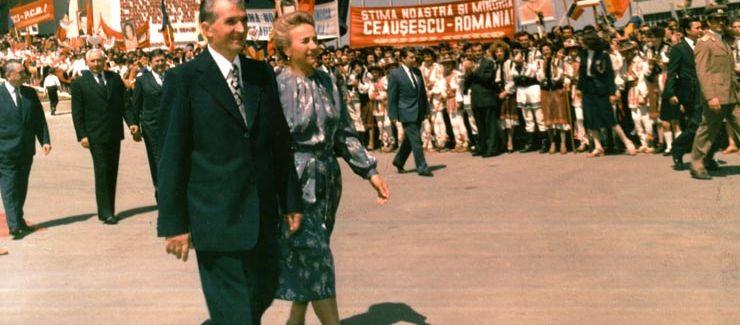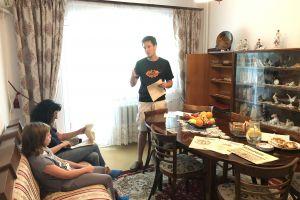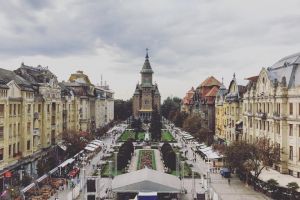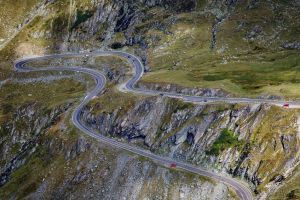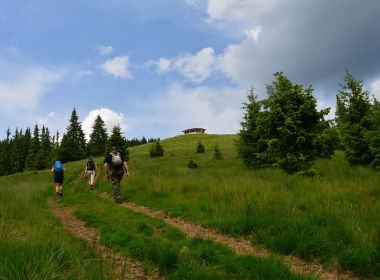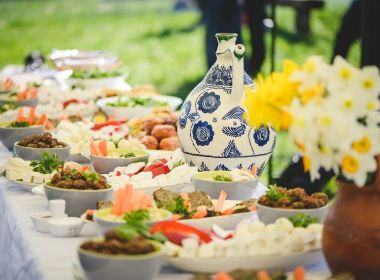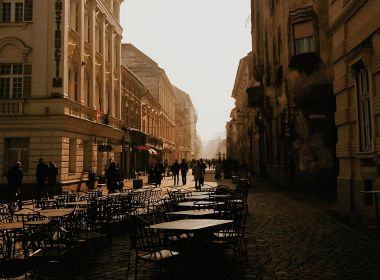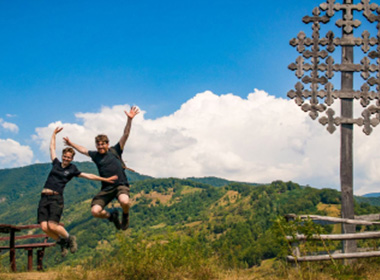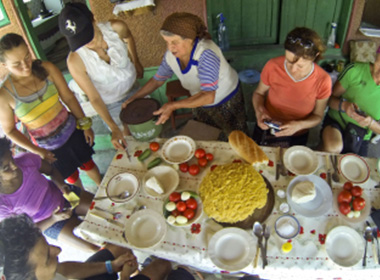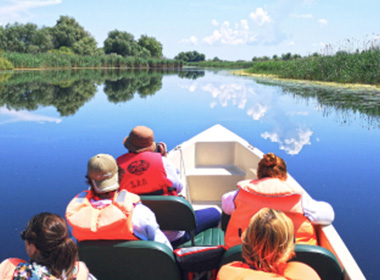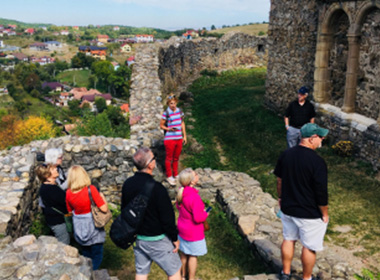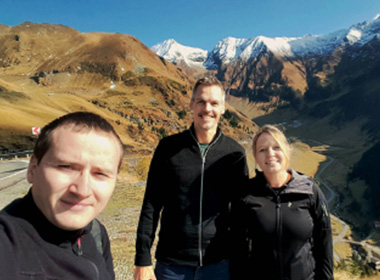Communist Romania refers to 1947 - 1989 when the communist party was in power. Some countries (eg. the Baltic states, Ukraine, Georgia) were part of the Soviet Union (USSR) while others (eg. Romania, Czechoslovakia) retained their national independence but were under the political influence of USSR (satellite states) and behind the Iron Curtain that divided Europe after World War II.
The communist period in Romanian history can be broken down into three main parts:
- a brutal transformation process following the soviet model from the late 1940s to the early 1950s
- a period of economic growth and flourishing from the 1960s to the mid-1970s
- the worsening economic and social conditions and eventual fall of communism in the late 1980s
But, unlike all the other countries from Eastern Europe that had a peaceful transition from communist rule to democratic values, the 1989 Romanian revolution turned violent. Diversionary 'terrorist' forces from the secret police who were personally loyal to dictator Nicolae Ceausescu and the communist regime shot and killed civilians and soldiers from the regular army.
So the communist period was one of the most difficult and grim in Romanian history. The effects of communism in Romania were present in the daily lives of Romanian people and society for a long time after 1989 - but less so since Romania joined the European Union in 2007.
If you decide to visit Romania a lot of the things you will see and hear about are a consequence of the communist heritage of our country.
So if you want to really understand Romanian society today, your history lesson will be complete after you visit the most significant communist tourist attractions in our country, such as the Palace of Parliament, the Communist Memorial in Sighetu Marmatiei or the private home of Nicolae Ceaușescu. The key is to go with a knowledgeable guide able to give you accurate information, because official tours will not give you any historical info about this period
In this article we'll give you some context and help you decide if and what to visit related to this subject:
- a brief history of Romania's communist period and how it changed Romanian society
- the rise of Nicolae Ceaușescu to the point where he was visited by a US president
- the fall of his communist dictatorship and why the Romanian revolution turned violent
- communist tourism: where to go and guided tours to learn more about communist Romania
Table of contents
- 1. Communist regime comes to power power (1944-1947)
- 2. Consolidation of communist rule and transformation of Romanian society (1948-1965)
- 3. The rise to power of Nicolae Ceausescu (1965-1971)
- 4. Communist dictatorship of Ceausescu begins (1971-1989)
- 5. How the 1989 Romanian revolution began and what happened
- 7. Transition to Romania today
- 8. Where to go for communist tourism in Romania
I'm a a history geek so this subject is fascinating for me - so let's get started!
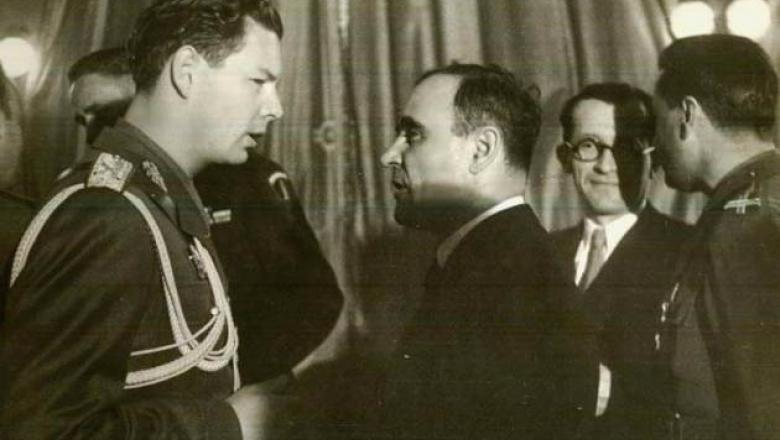
King Michael I and the Romanian government 1st communist prime minister Petru Groza
1. Communist regime comes to power power (1944-1947)
In September 1940 King Carol II abdicated as he was incapable to protect Romania's territorial integrity against the demands of Hungary (a strong supporter of nazi Germany) who wanted back Transylvania. Romania was basically dismembered and lost large parts of its territory, including the historical region of Basarabia (presently, the state of Moldova).
Army general Ion Antonescu was named prime minister and, with no other alternative or support in the region, Romania became an unwilling ally of Nazi Germany during World War II.
In 1944 seeing the tides of war were changing, King Michael I organised a coup d’état to overthrow general Ion Antonescu and switched Romania's allegiance joining the Allies against nazi Germany. This enabled the Red Army’s advance on the Eastern front and is said to have shortened World War II by six months.
But during the political instability caused by the coup and given the larger context of post-war European politics, the Romanian Communist Party (then Romanian Workers’ Party) led by Petru Groza - a minor and illegal party during the interwar period - obtained ideological endorsement and increasing support thanks to spreading propaganda and the presence of victorious Soviet troops who, de facto, occupied the country.
At the end of World War II the Allies divided Europe into spheres of influence at the 1945 Yalta Conference. The fate of the Romanian people was sealed and the Iron Curtain was created thus separating Eastern Europe (under the influence of USSR) from Western countries (under the protection of the United States) who went on to form NATO and the European Union.
The Romanian Communist Party obtained key position in the state and ultimately assumed power in Romania forcing King Michael into exile almost at gunpoint in December 1947. The democratic Kingdom of Romania was officially over on 30 December 1947 when the People’s Republic of Romania was proclaimed - but not part of the Soviet Union.
Local tip:when King Michael left he couldn't take anything with him other than his personal belongings; that's why Peles Castle one of the top tourist attractions in Romania remains in its original state from 1947 and is worth seeing!
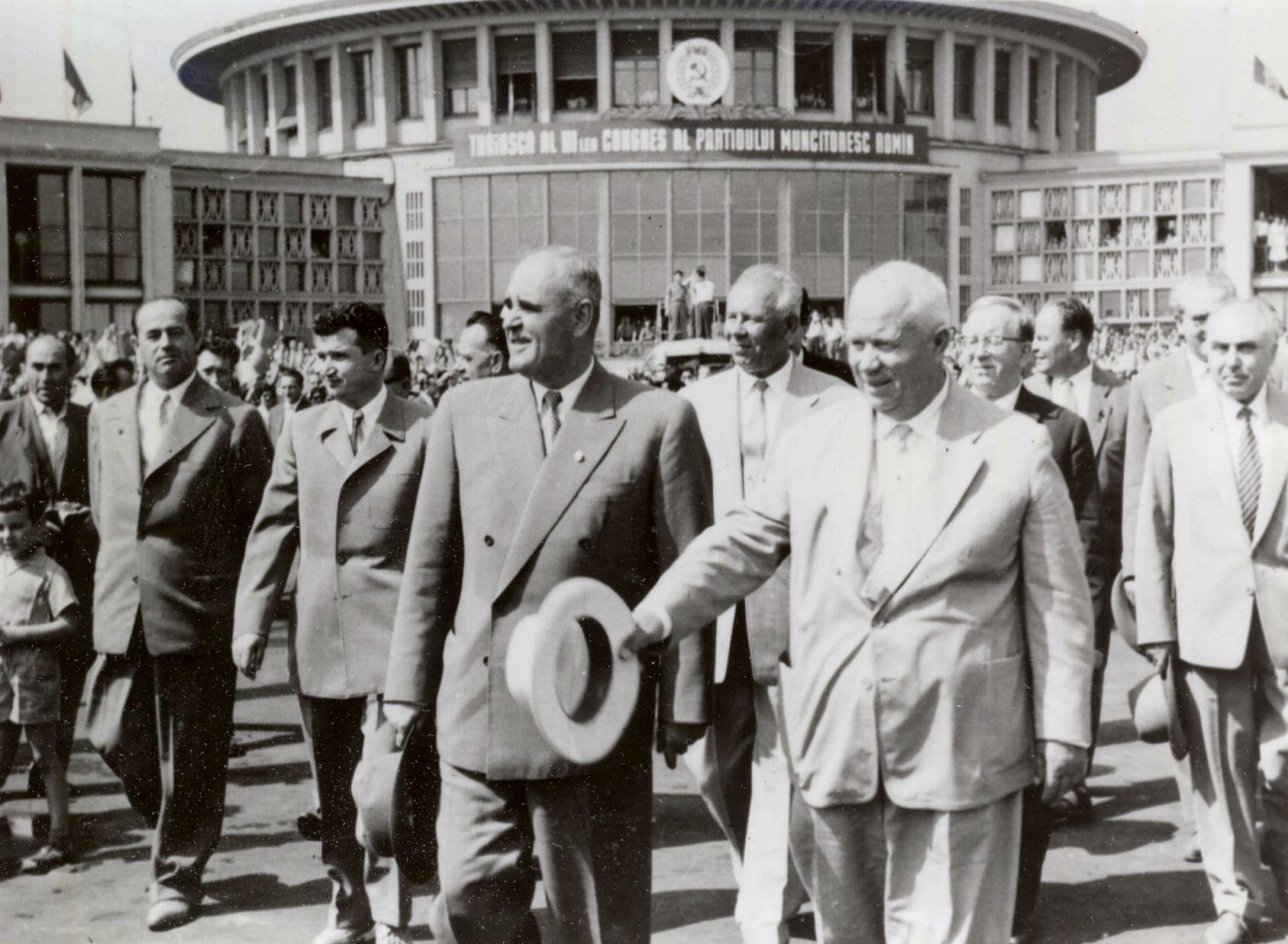
Gheorghe Gheorghiu-Dej (center) with USSR's leader Nikita Kruschev (right). Nicolae Ceausescu on Dej's left
2. Consolidation of communist rule and transformation of Romanian society (1948-1965)
Once the communist party was officially in power, a profound wide-ranging transformation process began. A period of intense turmoil and political instability followed while the entire Romanian society was purged and reorganised to follow the Soviet model.
Political opponents, aristocrats, businessmen and intellectuals were persecuted and imprisoned, their wealth and private property confiscated. This is when ethnic minorities, particularly German Saxons from Transylvania, were forced to flee the country.
The elites opposing the communist regime were sent to a prison far away from Bucharest in Sighetu Marmatiei, North West of Romania in the region of Maramures, which developed a reputation as one of the most brutal prisons. It's known now as the Victims of Communism Memorial Museum which you can visit.
The private economy was restructured and 'nationalized:' banks and large businesses became state-owned, private enterprises were banned, the land of ‘boyars’ (rich landowners) confiscated and put into collective farming.
As for political culture - it was basically exterminated. All political parties were banned and made illegal, while party leaders were sent to prison after show trials. Parliamentary elections were abolished and the Romanian parliament assumed a formal role in the Romanian state.
With civil society decapitated, the entire country was firmly under the grip of communist rule.
By the early 1950s all forms of opposition were eliminated and power resided solely with the Romanian Communist Party. History books were rewritten and the party’s propaganda apparatus was busy at work reshaping social and political culture. There was little information left about the period before 1940. Just like in North Korea today and in 1984 by George Orwell, free thinking was impossible.
With Soviet troops still in the country and the Yalta agreement in force, Romanian people - like everyone else in Eastern Europe - had no choice.
Ana Pauker, loyal to Stalin, held major roles in the new government of this period and was the de facto head of communist Romania. She facilitated the emigration of 100,000 Jews.
But because she was a woman and of Jewish origin, she could not formally assume the title of head of state.
So instead Ana Pauker supported Gheorghe Gheorghiu-Dej to become the Romanian Communist Party's Central Committee general secretary and eventually prime minister.
Seeing that his ‘leadership’ was firm and the transformation of Romanian society was going as planned closely following the Soviet model, in 1958 Soviet troops left Romania which was a premiere among the countries forming the soviet bloc in Eastern Europe.
Local insight:oral histories say Gheorghe Gheorghiu-Dej gave one too many vodka glasses to Kruschev until the latter agreed the withdrawal of the Soviet army...
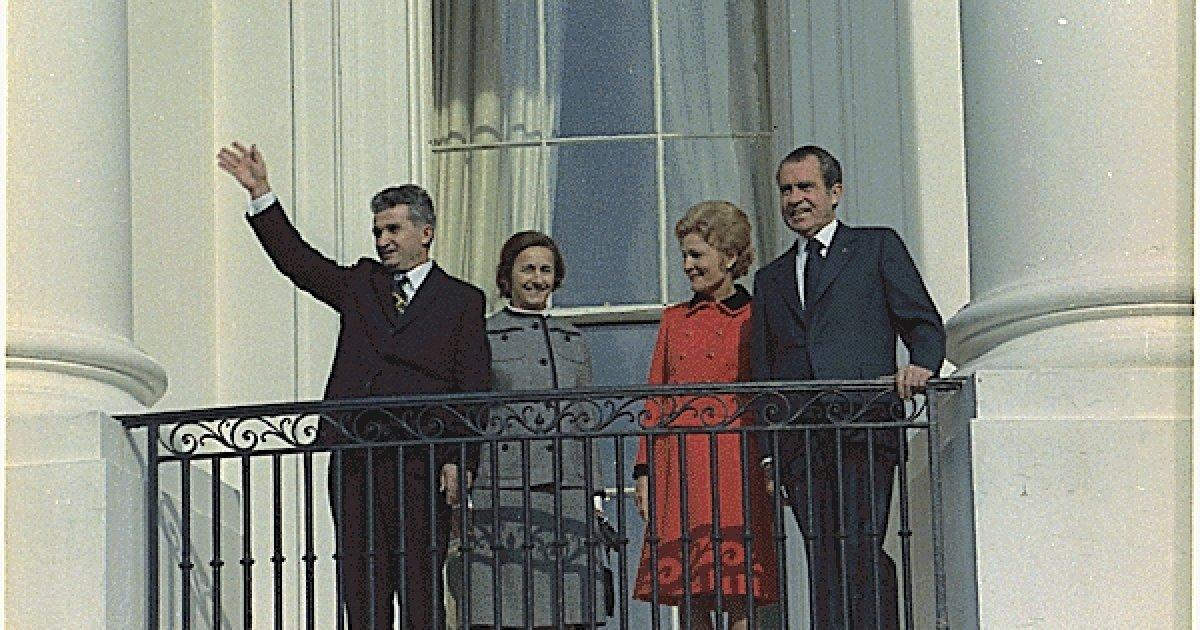
Nicolae Ceaușescu on a state visit to the United States in 1970
3. The rise to power of Nicolae Ceausescu (1965-1971)
Gheorghe Gheorghiu-Dej died in 1965 and was succeeded by his young protégée Nicolae Ceaușescu. Uneducated and coming from a poor peasant family with 10 children, he climbed the ranks of the Party. And, to everyone’s astonishment, he even spoke against some of the policies of his predecessor.
The first part of Ceausescu’s rule looked like a period of relative liberalisation as he wanted to style himself as an independent communist leader - not under the influence of Moscow, similar to Yugoslavia's Josep Tito.
Nicolae Ceaușescu publicly condemned the USSR's military intervention to crush the Prague Spring rebellion in 1968. Romania was the only one of the Warsaw Pact countries (the communist version of NATO) to do this. This opened up diplomatic relations with Western countries, and particularly the United States.
French president Charles de Gaulle made an official visit to Bucharest in 1968 and US president Richard Nixon followed in 1969. Nicolae Ceaușescu was invited to return the state visit to Washington in 1970 which was another premiere in Eastern Europe as none of the other communist leaders received such attention. Back then everyone's foreign policy was aligned with the Soviet Union!
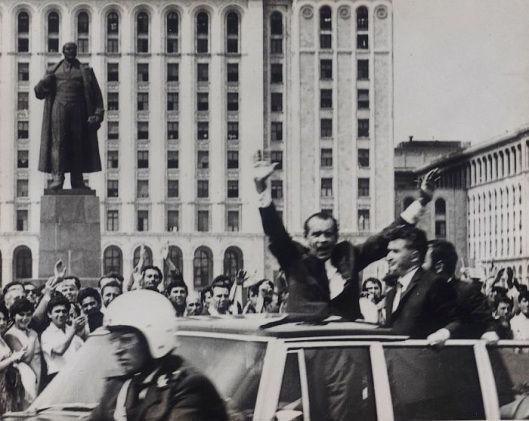
Romania was the only communist state from the soviet bloc to be visited by a US president
On the home front, a massive industrialisation process began and huge factories were built all over the country. This is when the communist neighbourhoods with towers of apartment buildings were built to house factory workers. Communist authorities helped people buy a home and so people willingly relocated from rural areas to a developing small town.
Life in communist Romania seemed to go well: young people had a home, stable jobs, state-sponsored education, free health care, security and a sense of equal opportunities and fair treatment - this was the Golden Age of communist Romania.
Foreign movies were shown in cinemas and books were once again translated. The reputation of several historians and writers was reinstated and the mandatory Soviet school literature was replaced with Romanian authors.
An open society in the communist version - supervised by the secret police - was mimicked, and people 'felt' free.
Nicolae Ceaușescu also changed the family policy of communist Romania. He wanted to boost the birth rate and in 1967 he banned abortion and contraception measures which had significant effects on demographics, social and health care of our country. 4 Months, 3 Weeks and 2 Days, one of the best Romanian movies you can also watch online, paints a realistic and chilling picture of those times.
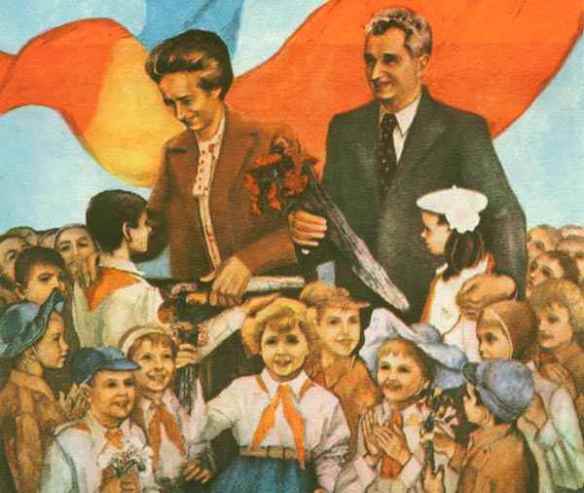
All communist leaders develop a personality cult
4. Communist dictatorship of Ceausescu begins (1971-1989)
Nicolae Ceaușescu had a change of heart and mind after he made a state visit to the People's Republic of China, North Korea, Vietnam, and Mongolia in 1971. Deeply impressed with the personality cult the communist leaders of those countries had built, Ceausescu proclaimed a new cultural revolution in Romania with strong nationalistic tendencies.
The strict guidelines of socialism were reinstated and the internal security agency - aka the secret police - known as Securitate became even more powerful and feared. This marked the beginning of dictator Nicolae Ceaușescu and his personality cult.
Mass indoctrination, state propaganda and huge ‘celebratory’ events became the norm. State administration became one with the communist party.
The Romanian Church and its priests, mostly tolerated until now, started being persecuted and banned. Celebrating Christmas in Romania and other major religious holidays became forbidden.
His wife Elena Ceausescu was promoted in high offices and soon became the second most powerful figure in the Romanian state.
But she had no formal education and besides vanity and grandiose titles had very little to contribute. Many oral histories say she was responsible for more than half of the bad decisions Ceausescu made, often times interrupting meetings on whims and overturning decisions with no justification.
Blinded by megalomania, the Romanian dictator started massive industrial but unviable economic projects such as the House of People (Palace of Parliament) and the Danube - Black Sea canal.
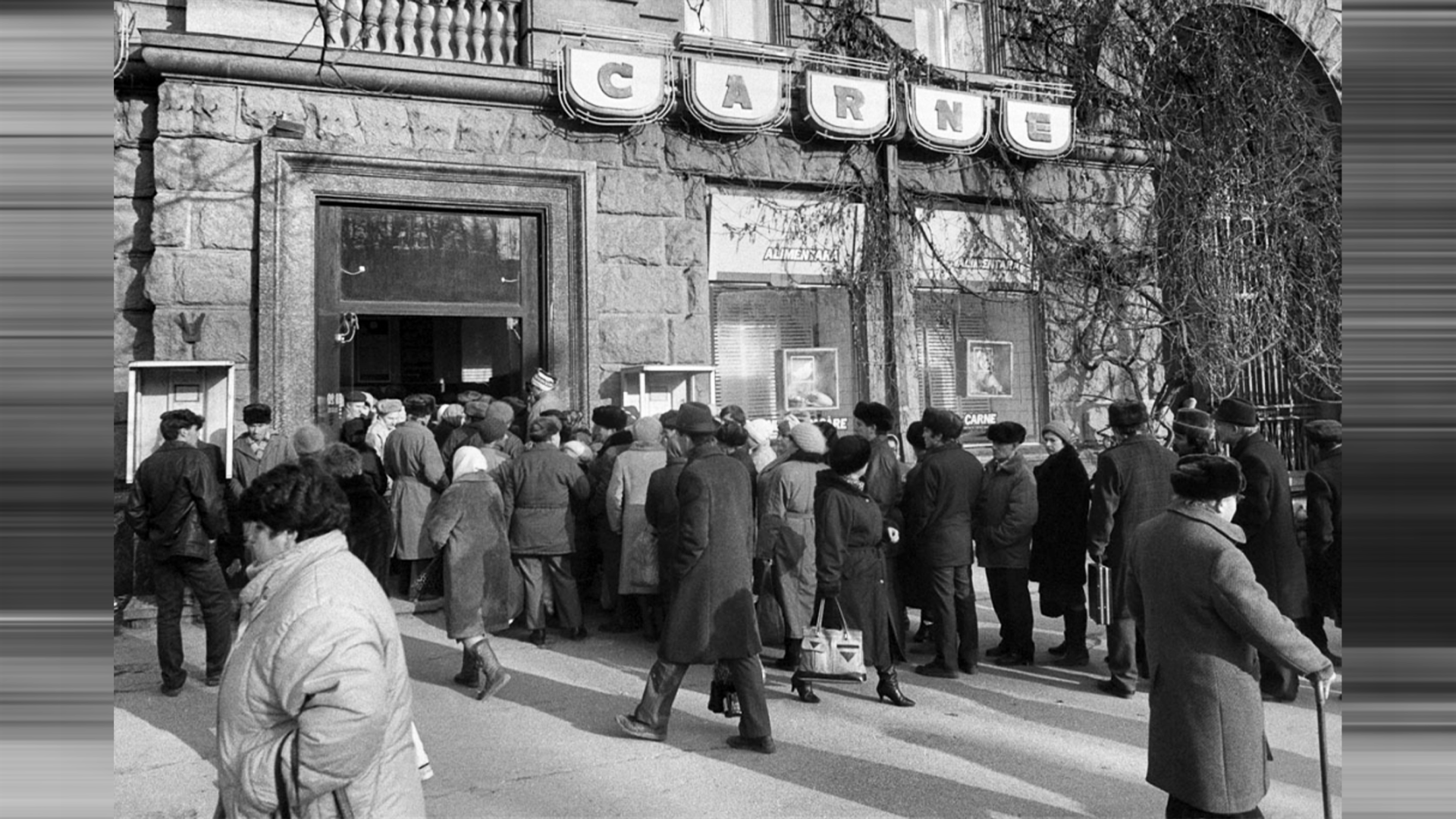
People had to queue for food and basic supplies. Shortages were the norm
By the early 1980s Romanian society was crumbling under the devastating effects of unsustainable economic policies: agricultural and industrial outputs were decided based on unrealistic 5-year bureaucratic plans. But everyone was lying to ‘achieve’ them and keep dictator Nicolae Ceausescu happy.
Life in communist Romania degraded further as Ceausescu became obsessed with paying off all of Romania’s foreign debt as he wanted complete national independence. All internal production was repurposed for exports and the communist authorities introduced rationing of food and common, basic goods.
By the end of the 1980s the Romanian people were humiliated, impoverished and had to queue for hours for bread, meat, fruits, gasoline and other essentials. Hot water, electricity and national television was available only for a couple of hours a day. Very much like North Korea today.
Meanwhile, the propaganda and parades for the Genius of the Carpathians were pushing people to their limits while the secret police (who relied on secret informants recruited from ordinary people) kept a firm grip on everything…
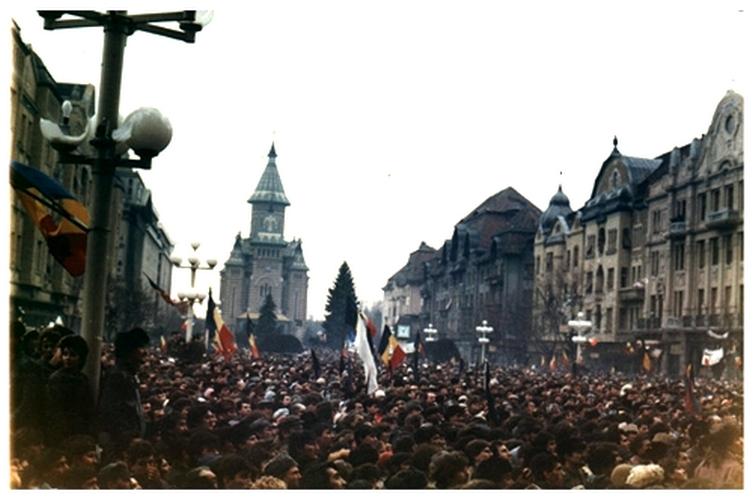
The Romanian revolution started in Timisoara
5. How the 1989 Romanian revolution began and what happened
As Radio Free Europe became more popular in the country in the late 1980s, ideas started spreading more easily.
Increasingly unhappy with the communist dictatorship, Romanians showed small signs of civil unrest through strikes and anti-communist manifestos - but these were quickly suppressed by the secret police.
On 16 December 1989 when a local pastor was arrested by the communist authorities in Timisoara, support for him quickly escalated into a full-blown anticommunist protest. Although workers were brought in from the rest of the country to stop the revolution ‘naturally’ – they ended up joining the protest.
The Romanian army intervened and opened fire against protesters but the situation went out of control. The communist authorities lost control and Timisoara was proclaimed a free city on December 20, 1989. News of the unrest spread quickly and this was the spark that ignited the Romanian revolution in other cities.
Ceausescu accused foreign powers of interference and organized a support rally in Bucharest on December 21 in what is now called Piata Revolutiei (Revolution Square). This turned out to be a disaster: people interrupted him and protested against the communist regime which took the Ceaușescu couple by surprise.
The last speech of Nicolae Ceaușescu - watch him at 1:15 surprised as the crowd begins to shout
As the crowds went out of control the Romanian army was asked to intervene. But they refused to open fire against the Romanian people and instead sided with the protesters.
That's when the Ceausescu couple fled Bucharest by helicopter but were later arrested in Targoviste. Forces from the secret police (Securitate) loyal to them and the communist regime were activated to create confusion and destabilise the protests that were spreading in major cities in Romania.
They opened fired against civilians and the regular armed forces. 1,166 people were killed and more than 4,000 injured all over the country.
A military tribunal was set up to investigate the Ceaușescu couple on charges of genocide, damage to the national economy and abuse of power. They were swiftly found guilty and executed by a firing squad on Christmas Day 1989 in Targoviste.
So in less than 10 days, 42 years of communist regime in Romania ended on 25 December 1989. The revolution and all hostilities ceased and Romania was proclaimed a free, democratic and capitalist country.
Given the role he played in Romania's history, Nicolae Ceaușescu is firmly on our list of famous people from Romania.
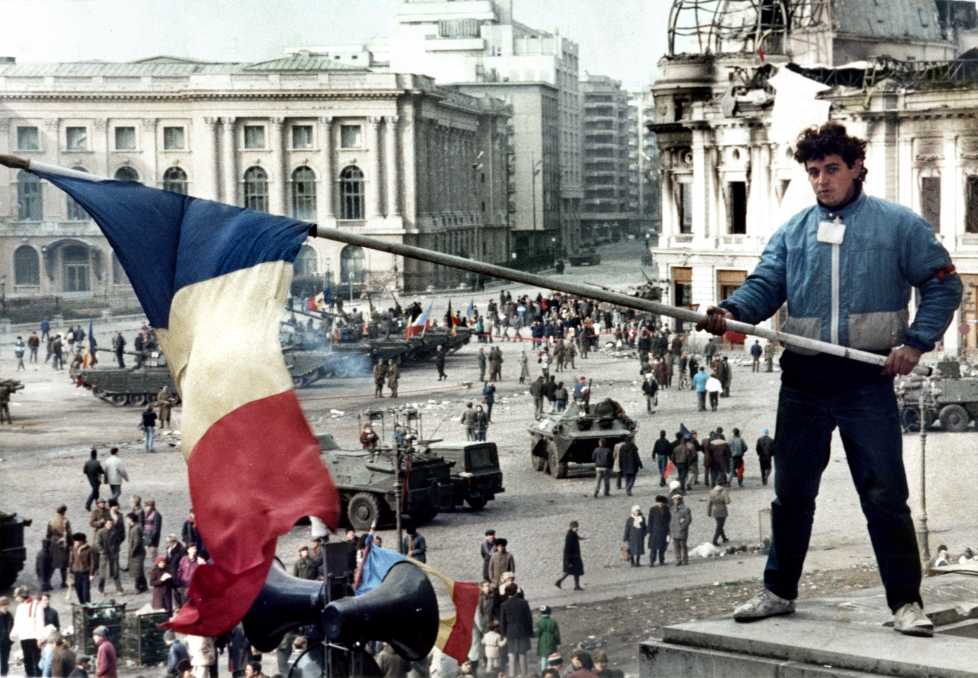
Romanian society begins a painful and confusing transition process
7. Transition to Romania today
It's hard to describe in words the painful and confusing process Romania went through since the early 1990s. How do you transition and entire country and 20 million people to democratic values, a liberal capitalist economy and a free, open society takes after almost half of century under a strict totalitarian regime?
Local insight:among the satellite states of the USSR in Eastern Europe that retained their national independence, Romania was known to have had the most strict and brutal totalitarian regime
Ion Iliescu, a former Romanian communist party high-ranking official, created the Social Democratic Party and won the first parliamentary elections organised in May 1990. He went on to become Romania's first president elected by the Romanian people.
But the political parties and 'democratic forces' that formed the ruling coalition of the new government were all made up of former members of the Romanian communist party and state authorities of the communist regime. There was no 'purge' and political culture for democratic values and a capitalist economy was immature, to put it mildly...
Coupled with the impoverished state most Romanians were living it, corruption flourished. The 1990s were very much like the 'wild west.' There was a lot of political instability because all politicians, wether they called themselves social democrats or liberal, were the same.
Even the investigation of the communist crimes and the violence that happened during the Romanian revolution stalled for 'national security' reasons. The European Court of Human Rights condemned Romania many times for this.
Only in recent years Romanian prosecutors have brought to light the facts and people behind the violence that happened then. If you want to find out more about how the Romanian revolution happened in Bucharest this tour is for you:
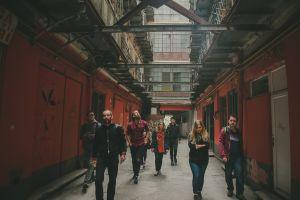
Untold Stories of Bucharest: Prostitution, Holocaust and Communist Terror
Start from: Piata Romana (Romana Square)
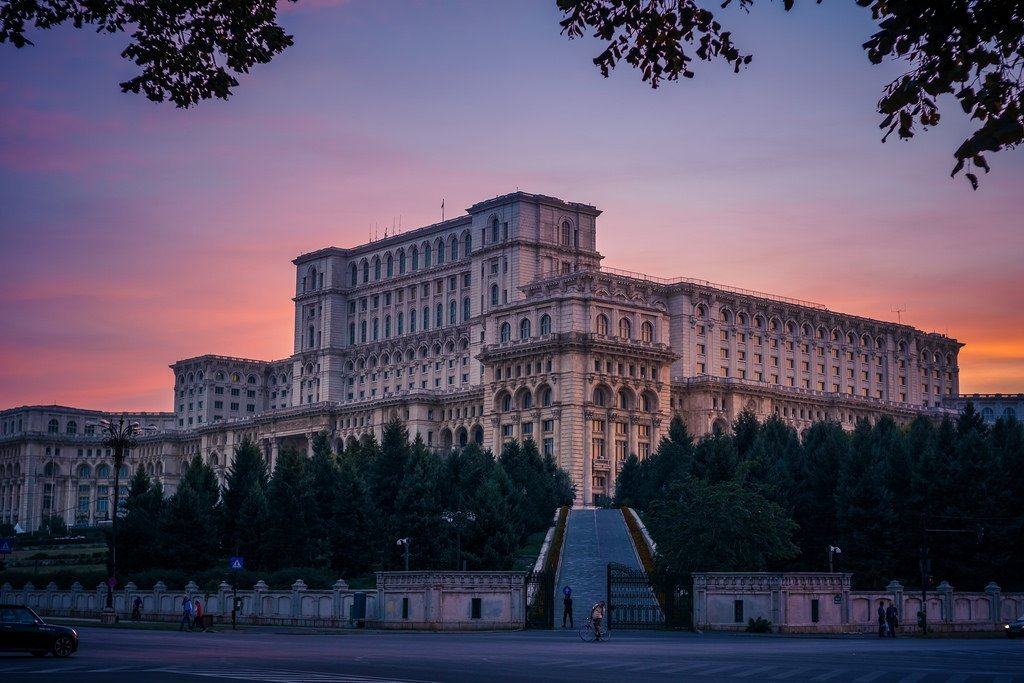
The House of People was built at a significant cost for the Romanian people
8. Where to go for communist tourism in Romania
Its communist regime is among the things Romania is best known for. If you’re planning to visit Romania and want to learn more about the communist period - we've prepared some suggestions for you.
There are several major tourist attractions you can visit as well as lesser known but representative sights and places including unique ways to experience what life in communist Romania was like back then.
If you’re looking for communist tours in Romania keep in mind that you'll need an expert guide that can give you accurate historical information and stories about Romania's history. There is much conflicting information, and even a lack of interest, for those times, so most guides are not knowledgeable in this.
That's why for these tours we work with guides with a degree in history who are knowledgeable about the communist period in Romania's history because we want to do tourism right.
- The Palace of Parliament
Arguably the most iconic communist landmark in Bucharest and Romania. Initially called “The People’s House,” its construction was ordered by Nicolae Ceaușescu after his official visit to North Korea.
Works began in 1984 and today the Palace of Parliament is the second biggest administrative building in the world after the Pentagon. It's a colossal 330,000 square metres building with more than 3,000 rooms.
Led by 28-years-old architect Anca Petrescu and 700 other architects, almost 100,000 people worked this massive project. To make space for it, Ceausescu ordered the demolition of 2.7 square miles of Bucharest’s old city center.
The finest materials and decorations of Romanian origins were used for its huge halls, corridors, meeting rooms and offices. It's also the most expensive building in the world and the Romanian people paid a heavy price for it...
The Parliament Palace can be visited only on official tours led by its staff who only talk about the building. So if you want to find out more about Romania’s communist regime check our tour below:
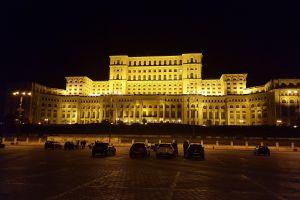
Complete Bucharest Communism Tour: Palace of Parliament & Ceausescu's Home
Start from: Bucharest
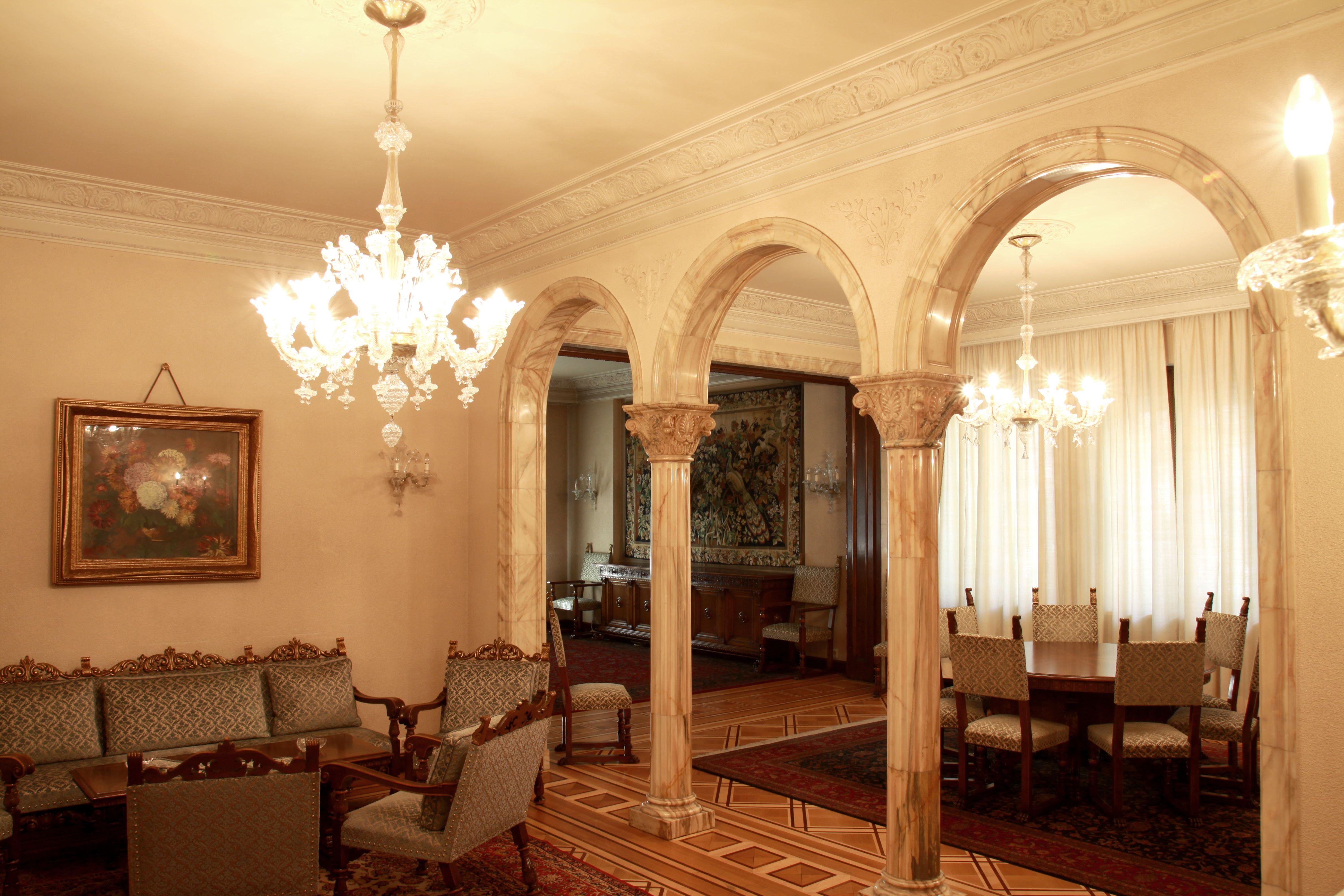
- Ceausescu’s House (Vila Primaverii)
While Gheorghe Gheorghiu-Dej was the head of the communist state, the residents of Primaverii Boulevard (an up-scale residential neighborhood of Bucharest) were kicked out of their homes to be replaced with influential party members.
New villas were built including one for dictator Nicolae Ceaușescu. Measuring more than 5,000 square meters, the mansion known as Vila Primaverii was finished in the mid-1960s and is a perfect representation of the defiant opulence communist leaders lived in while the people were impoverished.
It has more than 80 rooms, a pool, a winter garden and even a private cinema. From silk-covered walls and African ivory sculptures to lavish tapestries and handmade fine porcelains, the mansion is an eclectic blend of Eastern and Western decorations.
Nicolae and Elena Ceaușescu with their 3 children lived here between 1965 and 1989. The mansion opened to visitors in 2016 but, once again, the official tour does not offer any info about Ceausescu’s private life, daily routines or the communist period. So consider our Bucharest communism tour above.
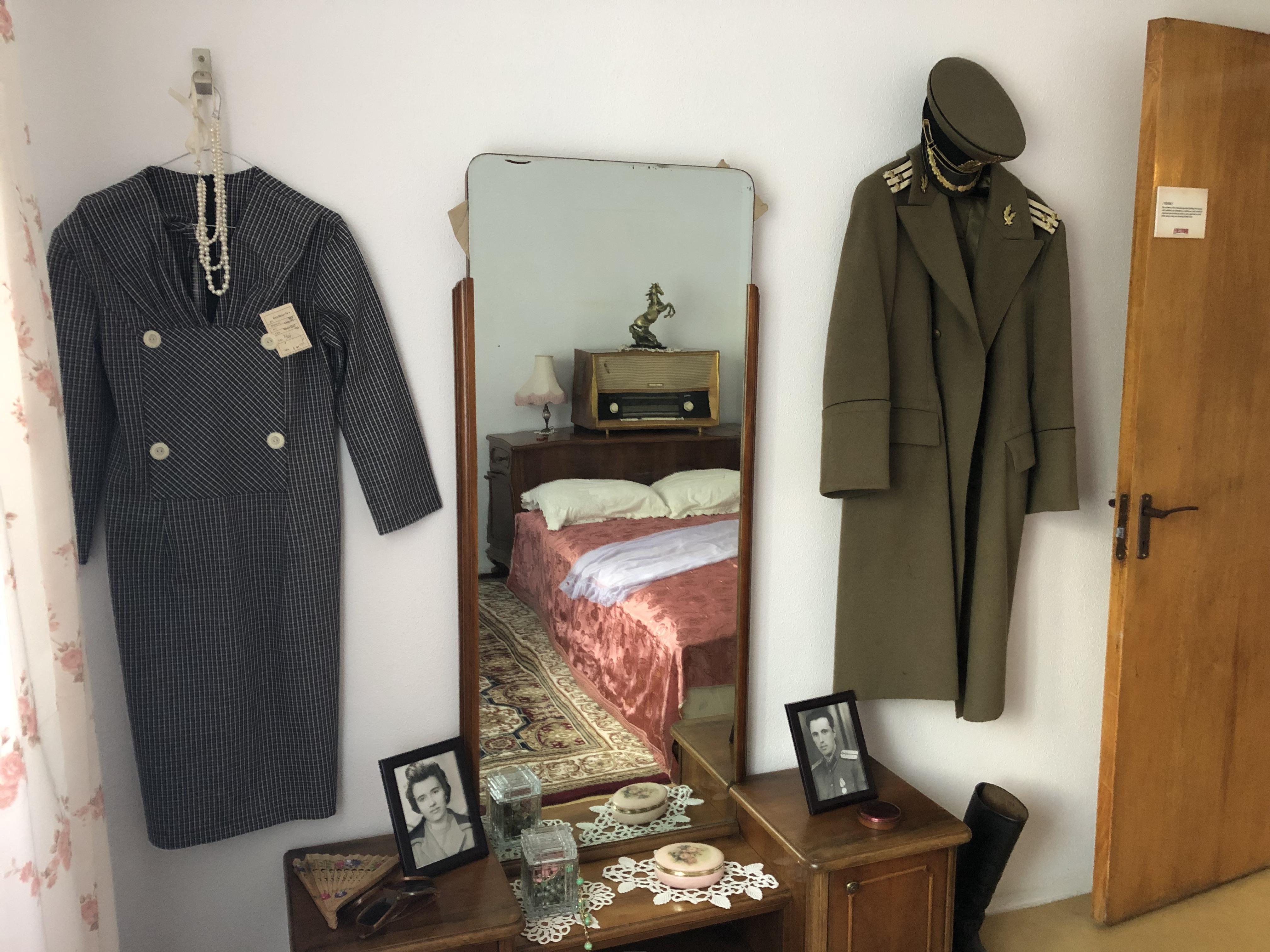
Want to see what life in communist Romania was like?
And if you want to see how Romanian people lived – in complete contrast to that of Ceausescu! - you can visit a unique time-capsule museum: a well-preserved apartment with objects, decorations and facts of life from the 1970s that belonged to the parents of one of our guides.
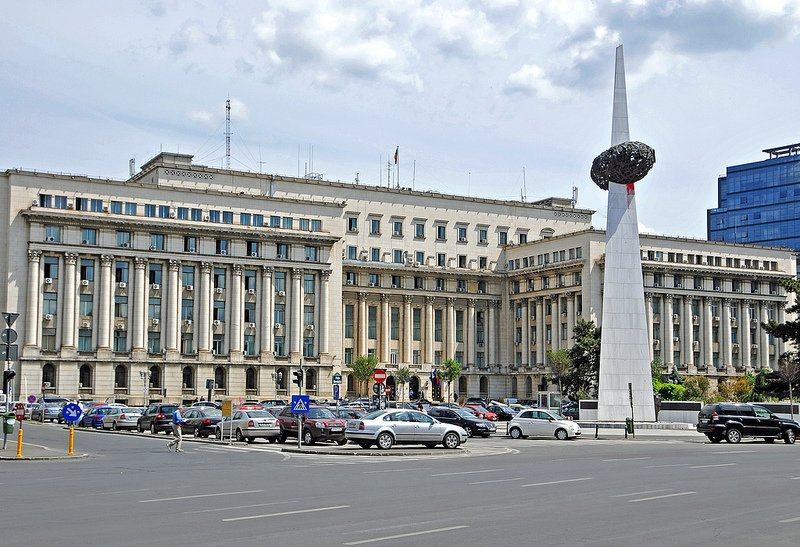
- Revolution Square in Bucharest
On December 21 1989 dictator Nicolae Ceaușescu organised a huge rally of about 100,000 people in Revolution Square (then called Palace Square) to show the strength and support for the communist regime. It was the dictator’s last public speech as the anticommunist revolution started before his eyes.
Revolution Square is an important tourist attraction in Bucharest and nearby is also the Royal Palace (now the National Museum of Art of Romania), the Romanian Athenaeum, the Athénée Palace Hotel (filled with espionage stories) and the Monument of Rebirth for the victims of the 1989 Romanian revolution. On our walking communist tour you'll learn more about these sights
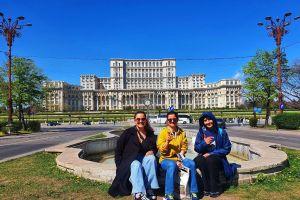
Communist Walking Tour: History, Megalomania & Hidden Sights
Start from: Revolution Square next to the Rebirth Memorial (The patatoe)
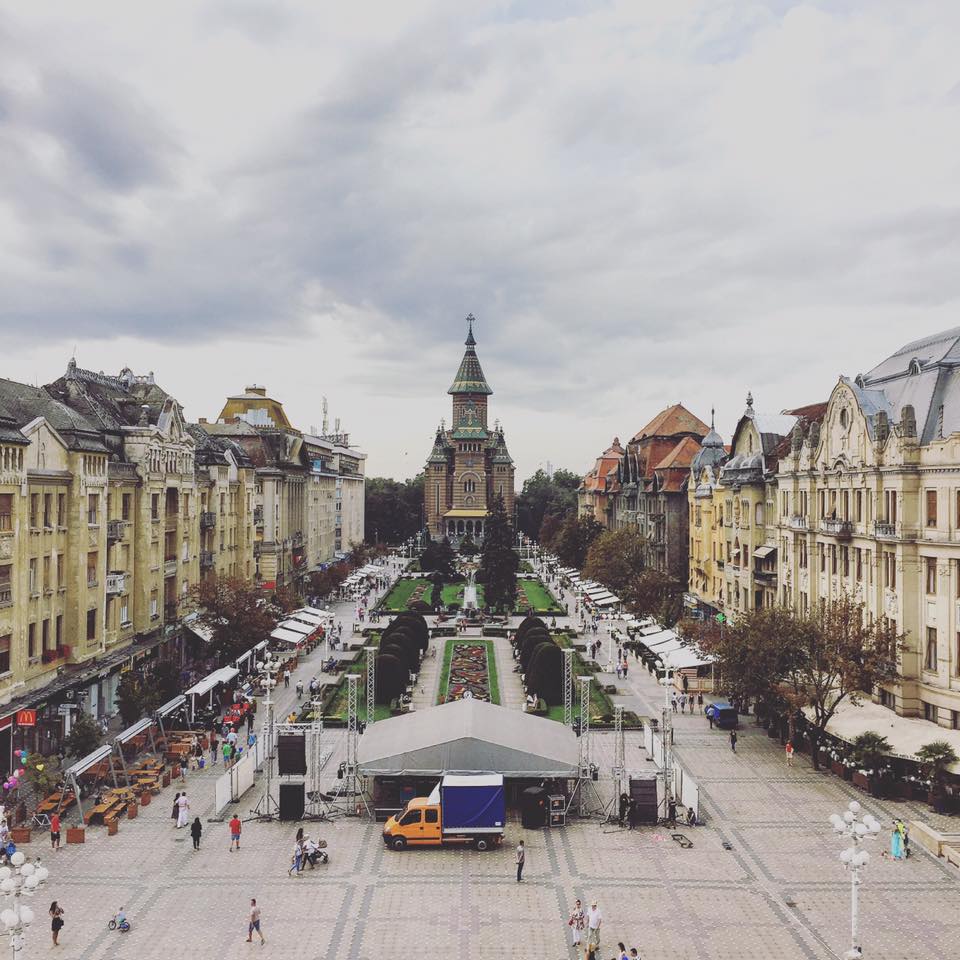
- Union Square in Timisoara
Union Square in Timisoara houses the Opera to the North and the Orthodox Metropolitan Cathedral to the South, two of the city’s most important landmarks. But apart from being a beautiful representation of Baroque architecture, the Union Square is also the place where the 1989 Romanian revolution began and where hundreds of people were killed by the military trying to stop the protests. Some buildings still have bullet holes in them.
There are many other things to do in Timisoara but one of our favorites is to visit the Communist Consumer Museum in Scârț Bar to see a collection of items from communist times.
- The Military Garrison at Târgoviște
As the people they summoned to Palace Square started to boo and chant anticommunist slogans, Nicolae and Elena Ceausescu tried to flee the country by helicopter but were captured in the city of Targoviste, about 47 miles from Bucharest. After a quick trial, on Christmas Day they were executed by a firing squad.
The military garrison where this happened was turned into a small communist museum where our guides explain the significance of this bloody event in Romanian history. The bullet holes and body outlines are still visible on the wall where they were executed, and you can also enter the small room where the trial took place.
If you want to see this we can prepare a custom tour for you, so contact us!
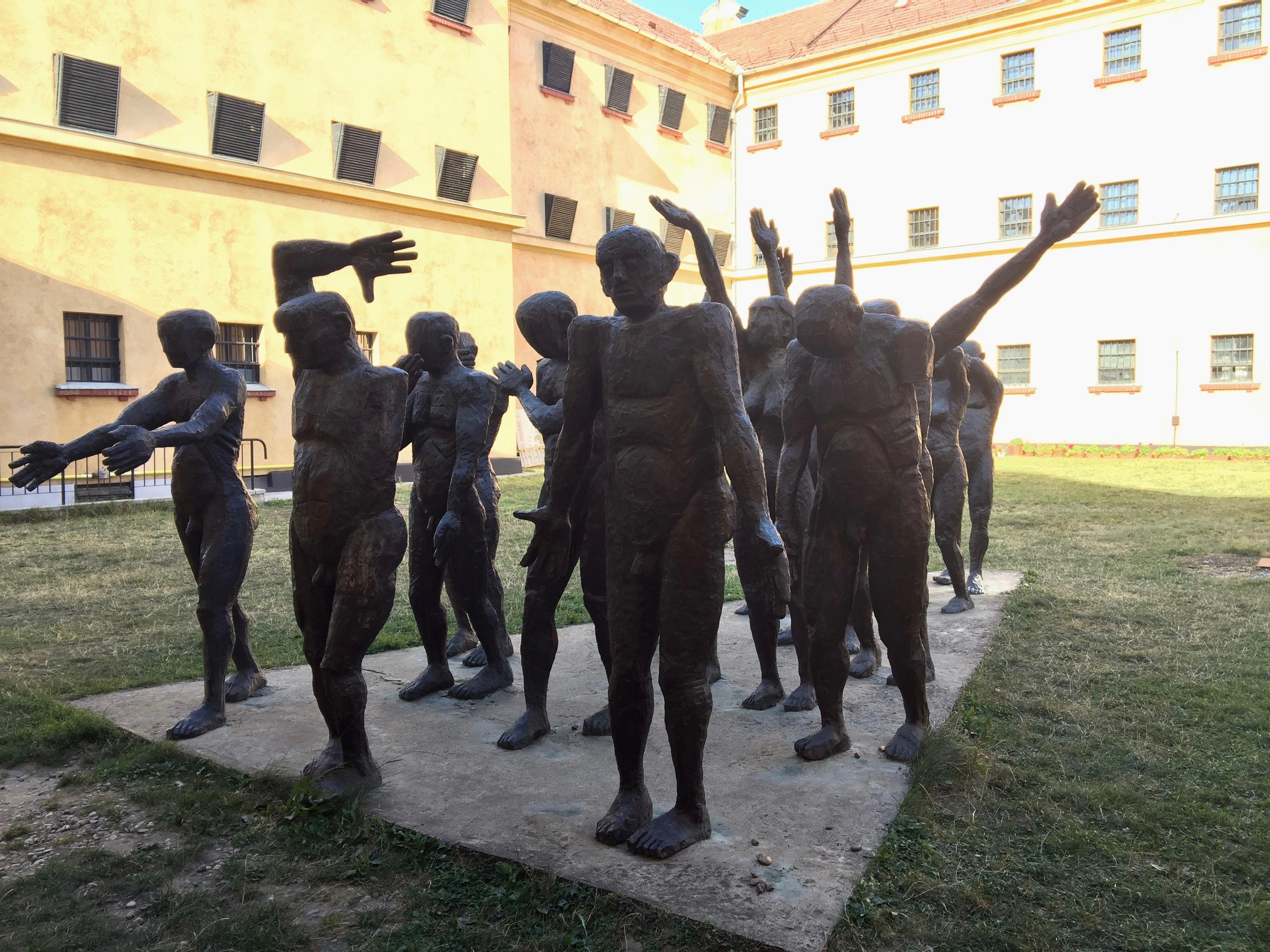
- Victims of Communism Memorial
The now bright and yellow building in Sighetu Marmatiei in Maramures, North-Western Romania, was one of the darkest and most feared communist prison where the regime’s political opponents and dissidents were tortured and killed, especially during the political turmoil of the late 1940s when the communism regime came to power.
After the 1989 Revolution, the Victims of Communism Memorial Museum was set up and each cell was turned into a museum room with photos, personal belongings of the prisoners and chilling stories of the lives and torture they had to endure. Though grim, this is by far one of the best museums in Romania.
A sad but powerful visiting experience that shows the dark side of Romania’s communist history. Located on the North Western border of our country with Ukraine, if you want to see it then you should consider planning to visit Cluj and going on tour from there.
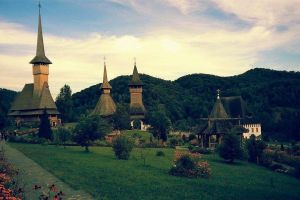
2 or 3 Days in Maramures: Wooden Churches, Traditions & Village Life
Start from: Cluj-Napoca
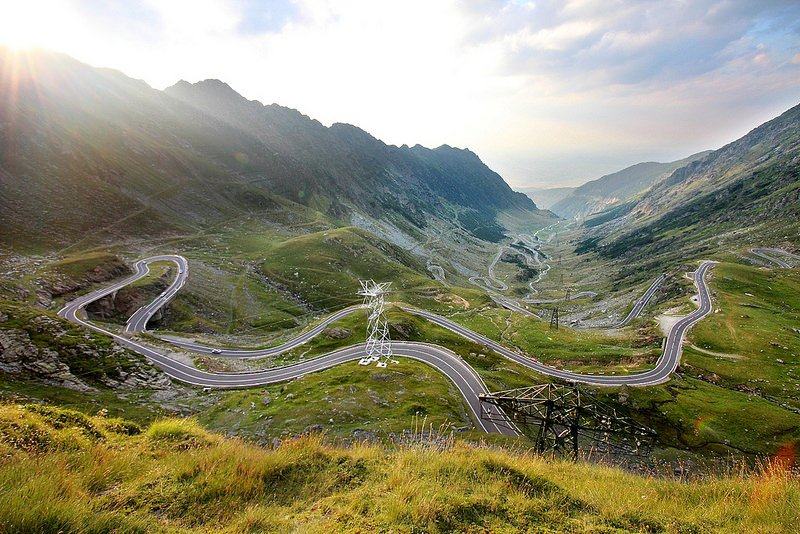
- Transfagarasan Road aka Ceaușescu's Folly
Built at the height of Ceausescu’s power between 1970-1974, Transfagarasan Highway is a winding mountain road crossing Fagaras Mts, the highest in Romania, to connect the historical regions of Transylvania and Wallachia.
Despite the technical difficulty of building a road going from plains to 2,200m altitude, Ceausescu ordered its construction to ensure quick military access across the mountains in case of a Soviet invasion.
Built at great human cost and using dynamite to blast the mountains, Transfagarasan Road is now one of the most popular reasons to visit Transylvania and also a great place to go hiking in Romania.
***
Well, this was a long article! I hope you enjoyed reading it as much as I did writing it.
As you can see, we're really passionate about our history so if you're interested in this topic and communist tourism don't hesitate to contact us - happy to help!
Your Romanian _Comrade :)
Marius
